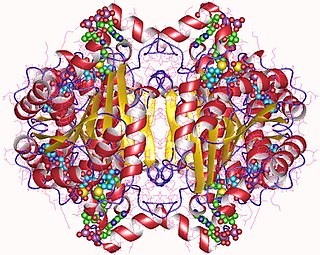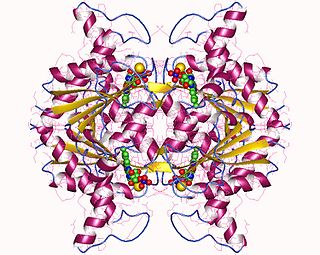| NADPH dehydrogenase (quinone) | |||||||||
|---|---|---|---|---|---|---|---|---|---|
| Identifiers | |||||||||
| EC no. | 1.6.5.10 | ||||||||
| CAS no. | 37256-37-4 | ||||||||
| Databases | |||||||||
| IntEnz | IntEnz view | ||||||||
| BRENDA | BRENDA entry | ||||||||
| ExPASy | NiceZyme view | ||||||||
| KEGG | KEGG entry | ||||||||
| MetaCyc | metabolic pathway | ||||||||
| PRIAM | profile | ||||||||
| PDB structures | RCSB PDB PDBe PDBsum | ||||||||
| Gene Ontology | AmiGO / QuickGO | ||||||||
| |||||||||
In enzymology, a NADPH dehydrogenase (quinone) (EC 1.6.5.10) is an enzyme that catalyzes the chemical reaction
Contents
- NADPH + H+ + acceptor NADP+ + reduced acceptor
The 3 substrates of this enzyme are NADPH, H+, and acceptor, whereas its two products are NADP+ and reduced acceptor.
This enzyme belongs to the family of oxidoreductases, specifically those acting on NADH or NADPH with other acceptors. The systematic name of this enzyme class is NADPH:(quinone-acceptor) oxidoreductase. Other names in common use include reduced nicotinamide adenine dinucleotide phosphate (quinone), dehydrogenase, NADPH oxidase, and NADPH2 dehydrogenase (quinone). It has 2 cofactors: FAD, and Flavoprotein. Several compounds are known to inhibit this enzyme, including Folate, and Dicumarol.







